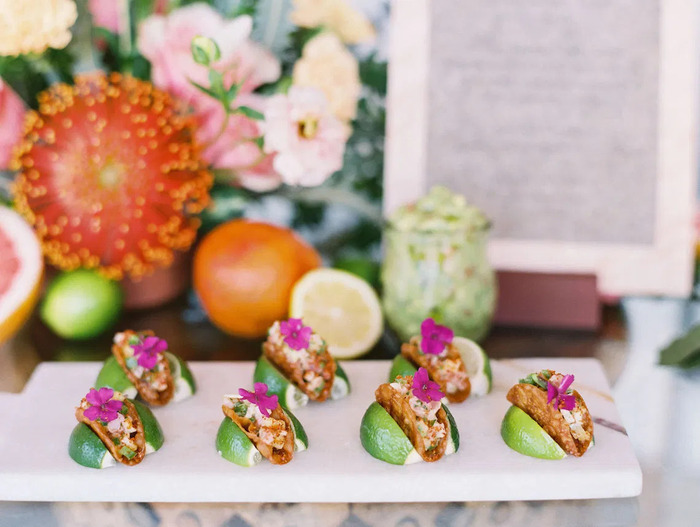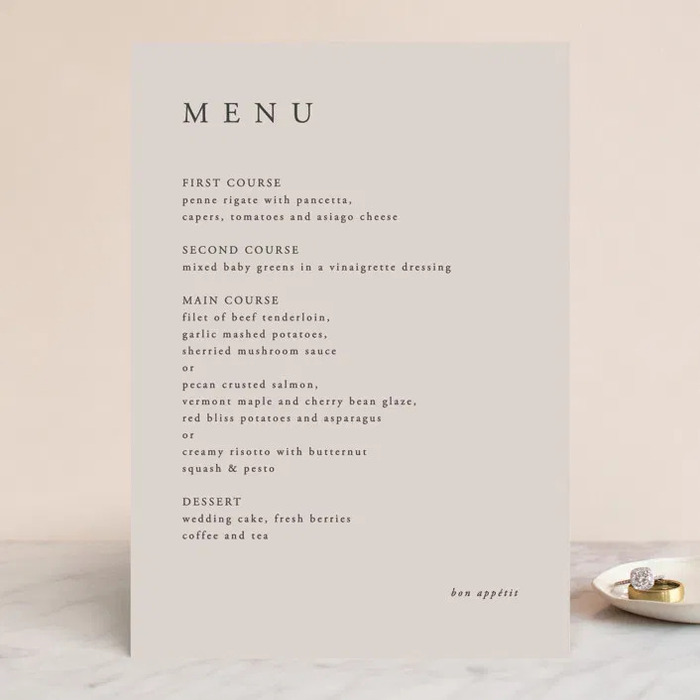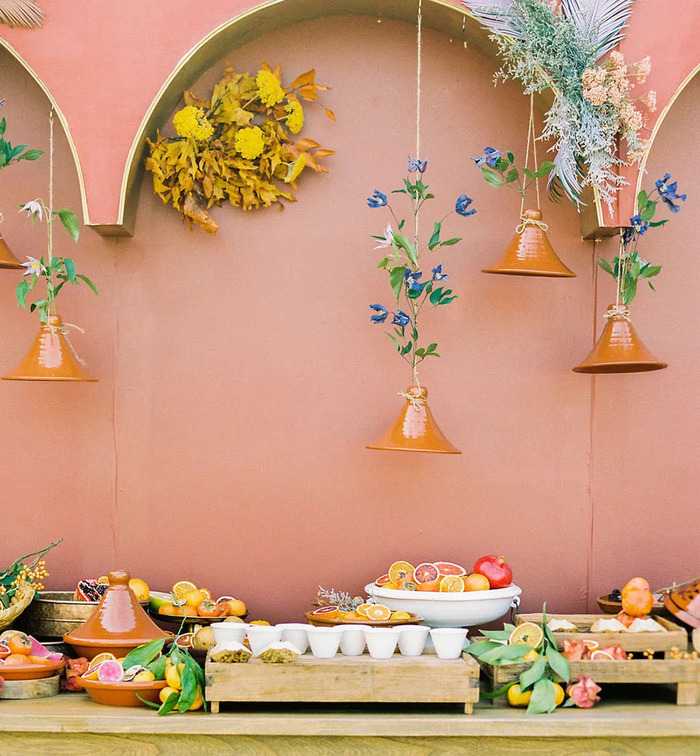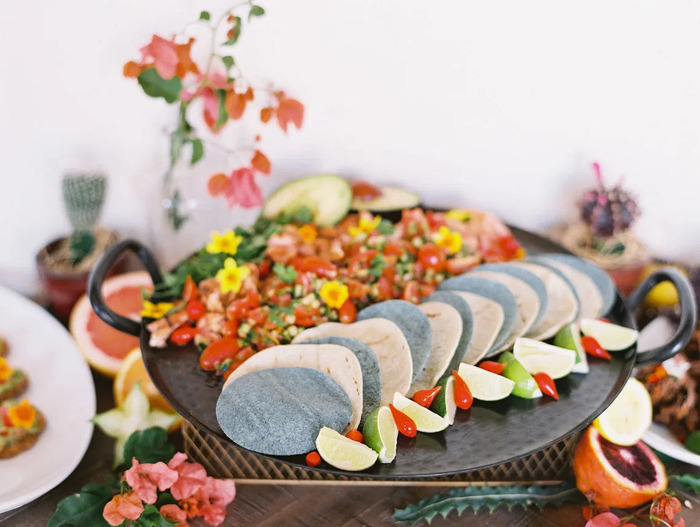Food is a huge part of your wedding day, it’s the time when everyone gets to sit down and enjoy each others company over a beautiful meal. But for some, food sensitivities, allergies, intolerances or certain diets make it a slightly stressful part of the day… and you want a fabulous dinner for everyone right? So we’ve rounded up the top 13 things you can do to make your wedding food more inclusive, so the dinner can be enjoyed by all!

Inclusive from the beginning
From the outset, you want to be as inclusive as possible. So when your developing your menu, be sure to keep in mind your guests’ allergies, intolerances or diets by including various offerings such as vegan, vegetarian and gluten-free. Dietary restriction options on your invitations are also a great way to make sure everyones catered for.
Avoid problematic ingredients
If many of your guests have the same dietary restrictions, it’s usually easier to ask your caterer not to include that ingredient in the menu.
Communication
Providing guests with information about food options and asking about any necessary dietary accommodations prior to your wedding is the best way to ensure everyone can enjoy the menu. Communication is key!
Customisations
Food restrictions and accommodations are very common, and something that will always need to be considered when developing a menu. Therefore, it’s easy to create dishes that avoid certain ingredients for your guests. Another way you can ensure that your menu is inclusive is to avoid those certain ingredients from your menu all together. There are many customisations that can easily be done!

Put some thought into the menu
For many people with dietary requirements, such as vegans, people with Celiac’s disease or people with Crohn’s disease, all they want is a good, tasty and filling meal that is safe to eat. Nonetheless, more often than not they are just greeted with a simple salad. So why not go the extra mile and ensure they have the same food experience as everyone else? The best way to do this is to choose alternative options that you’d also love to eat, and make sure to try it during the tastings!
Go local
Locally sourced ingredients such as fruits and vegetables ensures that your menu is packed full of flavour and nutrients, making every dish that little bit tastier! And it doesn’t stop at the food, wines and spirits are often locally produced so you can ask your caterer to add these onto the menu.

Seating charts
Seating charts are incredibly useful, and not to mention safe, when catering for guests with allergies. For example, if the caterer knows where the guests who have nut allergies are sitting, they can ensure that these guests will not come into contact with anything that has prepared nuts. For a more streamlined service, you can seat those with the same allergies in similar areas of the venue.
Menu cards
Placing menu cards at each guests seat is a great way to tell them the ingredients in each dish, and be sure to highlight the common allergen ingredients (nuts, dairy, meat) so they don’t have to be worried about what’s in the meal. They’re a super stylish and fun way to keep your guests informed!
Something for everyone
Especially at the pre-dinner canapés, include options that can be enjoyed by everyone. These can be crowd-pleaser options that cater to the common food sensitivities, such as vegetarianism or gluten-free.

No overthinking
If you do have a lot of guests with food sensitivities, don’t overcomplicate it for yourself! There are many delicious options that cater to a variety of intolerances that don’t need loads of small modifications, keep it simple.
Food stations
Offering food stations allows your guests to choose what they eat and ensures all dietary requirements are met. Think salad, baked potato and pasta bars!
Buffets
Although they’re less formal, buffets are a great way to ensure every one of your guests have something to eat. Guests can build their own plate out of whatever ingredients they choose, just be sure to list the ingredients and allergens next to the dish.
Always overshare
When it comes to your wedding menu, it’s always best to overshare information on the food. Be sure to list all the ingredients of the dishes on your RSVP cards, and your guests can always give you a call if none of the options suits them.

